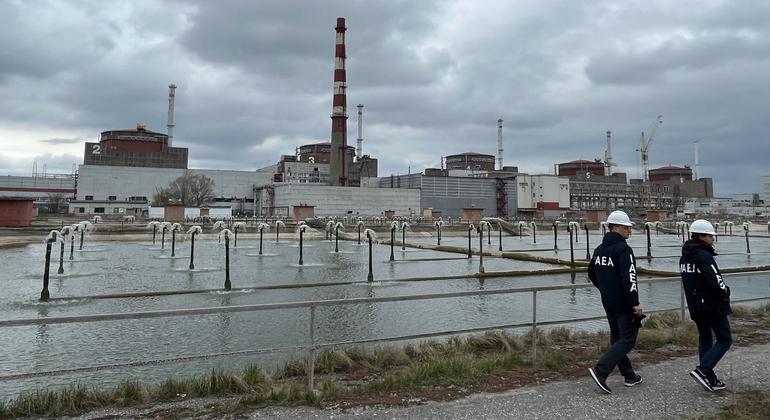The United Nations continues to work against the clock after the explosion of the dam of the Nova Kakhovka hydroelectric power station.
The UN coordinator in Ukraine, Denise Brown, met this Thursday with the Ukrainian Foreign Minister, Dmytro Kuleba, and reiterated the support of the United Nations. The Organization’s teams work on the ground from day one.
Since then, the UN and its humanitarian partners have been distributing water, food and cash to flood-affected people in Kherson and Mykolaiv oblasts, in collaboration with local authorities.
In collaboration with the authorities of these provinces, the relief operations are planned to reach the areas most affected by the floods as soon as possible, once the army considers it safe, given the risks posed by the rapid movement of water, which displaces mines and unexploded ordnance to areas previously considered clear.
The UN has pledged to reach all Ukrainians in need on both sides of the Dnipro riverbank, repeatedly calling for guarantees of access and security, particularly on the left bank, under temporary military control by the authorities of the Russian Federation. However, it has not yet received the necessary security guarantees for the activities of humanitarian personnel.
After the dam burst on Tuesday, at least 40 towns and villages are flooded in the Kherson region, a situation that has prompted the evacuation of thousands of people, according to the United Nations Children’s Fund.
UNICEF continues its activities on the ground distributing humanitarian aid, water, hygiene kits, children’s items and financial support.
For his part, he World Food Program (WFP) has so far delivered, together with its partner Tarilka, 7,000 rations of ready-to-eat food in the provinces of Kherson and Mykolaiv.
The United Nations and all relevant Ukrainian government ministries continue to collaborate in assessing the long-term damage caused by this catastrophe.
The presence of the IAEA is more necessary than ever
The CEO of the International Atomic Energy Agency (IAEA) stressed this Wednesday that the organization’s presence at the Zaporizhia nuclear power plant is currently “of vital importance to help prevent the danger of a nuclear accident and its possible consequences for the population and the environment while the military activity in the region.
Rafael Mariano Grossi indicated that the possible loss of the main source of water to cool the plant “complicates even more an already extremely difficult and challenging nuclear safety and protection situation”.
The activity at the nuclear plant seeks to guarantee the maximum amount of water to cool the plant in the face of uncertainty about access to the Kakhova reservoir, whose flow continues to drop.
From the rupture of the dam this Tuesday until Wednesday afternoon, its water level dropped to 14.03 meters. If it drops below 12.7 meters, the nuclear power plant will not be able to pump water from the reservoir to its compound.
Since the full extent of the damage to the dam is still unknown, it is not possible to predict if and when this event will occur. However, if the current rate of descent is maintained, the 12.7-meter mark could be reached within the next two days.
Grossi will travel next week to the Zaporizhia plant to assess the situation and monitor compliance with the five basic principles to protect the plant that he presented to the Security Council of the United Nations on May 30.





![[Img #74664]](https://thelatestnews.world/wp-content/uploads/2024/12/James-Watson-The-controversial-genius-behind-the-double-helix-150x150.jpg)







